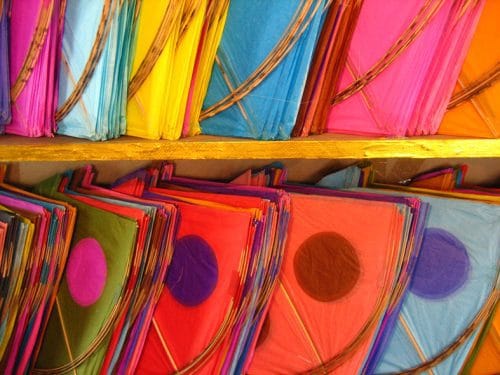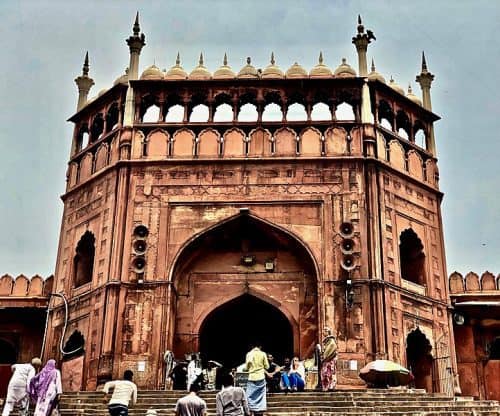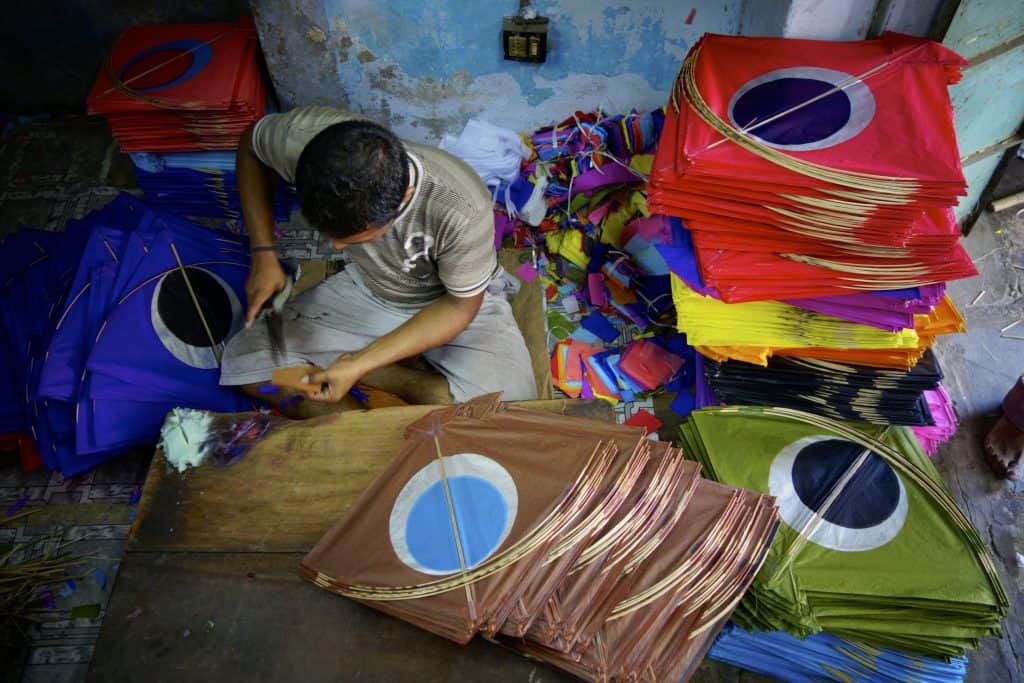Patang Bazaars in Delhi are where the city’s sky-high excitement truly begins! Discover the best markets to find unique kites and experience the festive spirit of the city.

If you’ve ever been captivated by the vibrant colours of kites soaring high in the sky, then you’re in for a treat! Delhi, with its rich cultural tapestry, has some of the most exciting patang bazaars that every kite lover should explore. No matter if you’re a seasoned kite enthusiast or just someone looking to relive the joy of childhood, these bustling markets or patang bazaars in Delhi are the perfect places to find that perfect kite.
Let’s take a stroll through Delhi’s top 3 patang bazaars and discover the must-visit spots where the magic of kite flying truly comes alive. Ready to dive in? Let’s go!
A timeless tradition of Patang Bazaars in Delhi
In the vibrant, ever-buzzing heart of Delhi, there’s a timeless tradition that has woven itself into the very fabric of the city’s culture—kite flying. This colourful spectacle, which paints the sky with myriad shapes and hues, is more than just a pastime; it’s a celebration that captures the spirit of Delhi, particularly during festivals in India like Makar Sankranti, Independence Day, and Raksha Bandhan.
As these special days approach, the anticipation in the city is palpable. Streets echo with excited chatter, rooftops become arenas of friendly competition, and the sky transforms into a canvas of fluttering kites. This tradition, cherished by young and old alike, has been passed down through generations, symbolising not just festivity but a shared sense of community and joy.
At the heart of this kite-flying frenzy are the iconic Patang Bazaars in Delhi — historic marketplaces like those in Lal Kuan, Chandni Chowk, and Jama Masjid. Here, the excitement reaches fever pitch as shopkeepers stock their stalls with every imaginable type of kite, from the simplest paper designs to elaborate, artistically crafted creations.
The bazaars buzz with life, as kite enthusiasts, from seasoned flyers to eager novices, throng to these markets to prepare for the days when the sky will be theirs to conquer. These markets, steeped in history, are not just places to buy kites; they are the living, breathing soul of Delhi’s enduring love affair with this ancient art.
The Historic Patang Bazaars in Delhi:
Lal Kuan:
Celebrating Independence Day in Delhi wouldn’t be complete without a sky filled with colourful kites, and for the best selection, there’s no better place than Lal Kuan in Chandni Chowk. As soon as you step out of the Chawri Bazaar metro station and head towards Lal Kuan, the vibrant display of thousands of kites instantly brightens the entire street.
From small street stalls to larger walk-in shops, nearly every store in the lane offers a wide variety of kites, priced between INR 2 and INR 300. While many kites and Manja are crafted locally, you’ll also find options from Meerut, Moradabad, Jaipur, and Gujarat.
Among the array of colourful and glittering kites, it’s easy to spot those featuring images of Bollywood and Hollywood stars, prominent political figures, and popular cartoon characters. Some shops even specialize in creating custom kites for kite flying clubs and individual competitors in kite flying festivals.
Manja, too, comes in various sizes and materials, with the option to place advance orders for their super-sized rolls, which can cost up to INR 4,500. What is Manja? you may well ask. Manja is a sharp, abrasive string used for flying fighter kites, especially popular in South Asian countries. It’s created by coating a cotton string with powdered glass or similar abrasive material, giving it its distinctive cutting edge.
Dominating the skies requires not just skill, but also the perfect kite and manja set, and Lal Kuan is the ideal place to find both. Whether you’re buying individually or in bulk, these shops offer everything you need at affordable prices.
Chandni Chowk:
The scene at Chandni Chowk’s kite market is nothing short of electric, especially as kite-flying festivals like Makar Sankranti, Independence Day, or Raksha Bandhan approach. As you step into the narrow, bustling lanes, you’re immediately greeted by a riot of colours—kites of all shapes, sizes, and designs hang from every available space, creating a canopy of vibrancy above your head. The market is a sensory overload, where the sights, sounds, and smells blend into a chaotic yet captivating experience that embodies the spirit of Old Delhi.
Shopkeepers, with their infectious energy, stand outside their stalls, shouting out the best deals and drawing in customers with promises of the highest-flying kites and the sharpest manja. Their enthusiasm is matched by the crowd of buyers, from seasoned kite flyers to wide-eyed children, each eager to find the perfect kite to dominate the skies. The market stalls are a treasure trove of options, offering everything from traditional “patangs” with their simple elegance to modern, designer kites featuring intricate patterns, bold colours, and even images of popular Bollywood stars, political figures, or beloved cartoon characters.
The selection of manja is just as varied, with shopkeepers proudly displaying spools of string ranging from the basic cotton thread to the tough glass-coated variety that kite flyers prize for cutting through the competition’s lines. Some shops even offer custom-made kites and special manja, catering to the needs of professional kite-flying clubs or participants in local competitions.
The air is filled with the constant buzz of conversations, as buyers haggle over prices, exchange tips on the best kite-flying techniques, and share stories of past victories in the skies. The smells of freshly made glue, paper, and the occasional whiff of street food waft through the air, adding to the sensory richness of the experience. Every corner of the market pulses with life, capturing the essence of a tradition that has been celebrated for generations.
In this vibrant market, the excitement is palpable. The kite bazaar is part of a centuries-old tradition that brings people together, transcending age, class, and background. The Chandni Chowk kite market is more than just a place to shop—it’s a living, breathing celebration of Delhi’s cultural heritage, where the joy of kite flying is passed down through the generations, one kite at a time.
Jama Masjid:
As you approach the historic Matiamahal area of Jama Masjid, the market’s vibrant energy is palpable, with the narrow lanes surrounding the mosque teeming with life and colour. The moment you step into the market, you are greeted by a vivid display of kites in every conceivable design and colour, creating a vibrant tapestry against the backdrop of the centuries-old mosque.
Shopkeepers, full of energy and enthusiasm, line the streets, each vying for the attention of the eager customers passing by. They call out their best deals and proudly showcase their collections, which range from the most basic, traditional “patangs” to elaborate, modern designs that appeal to the tastes of all generations. The market is alive with the sound of lively bargaining as buyers, both seasoned kite-fliers and novices, haggle over prices and compare the merits of different kites and strings.

The variety of kites available is staggering. Traditional kites made of paper and bamboo with simple designs share space with modern. The aromas of the market are equally engaging, with the scent of freshly cut bamboo, glue, and paper mixing with the delicious smell of street food from nearby stalls. The air is thick with the chatter of excited buyers discussing the best strategies for their upcoming kite battles, sharing tips on which manja to use and recounting stories of past kite-flying triumphs.
Whether you’re there to buy a single kite or stock up for a grand kite-flying event, the market offers everything you need, from individual purchases to bulk supplies, all at prices that are accessible to everyone.
The Art of Kite Making at the Bazaars:
The art of kite making is a manifestation of the skill and dedication of artisans who have perfected this craft over generations. These craftsmen, often working in small workshops tucked away in the bustling lanes of cities like Delhi, meticulously create kites that are not just tools for recreation but also works of art. The process begins with the selection of materials—lightweight bamboo for the frame and vibrant paper or plastic for the body.
The bamboo is carefully split and shaped to form the backbone of the kite, providing both flexibility and strength. The paper is then cut and glued with precision, often adorned with intricate patterns or vibrant colours that catch the eye as they soar through the sky.

In addition to traditional designs, modern kite makers are experimenting with new materials and techniques to create kites that are both durable and aesthetically appealing. Despite the rapid modernization and the availability of mass-produced kites, these artisans remain committed to their craft, infusing each kite with a personal touch that reflects the cultural heritage and artistic traditions of their communities. By adapting to contemporary trends while preserving age-old techniques, kite makers are ensuring that this cherished craft continues to thrive in a world that is constantly changing.
Kite events across India are a big boon to kite enthusiasts
Of course, several kite events are a big boon to kite enthusiasts. The International Kite Festival in Gujarat, particularly in Ahmedabad, is one of the most celebrated kite festivals in the world. Held every January during Makar Sankranti, this vibrant event draws kite enthusiasts from across the globe, turning the sky into a canvas of colours and creativity. Gujarat’s festival is famous for its large-scale participation, with kites of all shapes and sizes battling for supremacy in the skies.
In addition to Gujarat, other regions in India also host their unique kite festivals. In Jaipur, the Rajasthan Kite Festival sees the Pink City come alive with high-flying kites during Makar Sankranti. The coastal town of Mamallapuram in Tamil Nadu hosts a mesmerizing kite festival against the backdrop of ancient temples and the sea. In Lucknow, Uttar Pradesh, the Uttarayan festival brings together locals for a day of spirited kite flying, while West Bengal’s Vishwakarma Puja also features kite flying as a key highlight. Each festival showcases India’s diverse cultural tapestry, all united by the joy of kite flying.
Challenges faced by Patang Makers:
The Patang Bazaars in Delhi, long-standing centres of cultural and commercial activity, are facing significant challenges as the world around them changes. Modernization and the rise of digital entertainment have altered the way people spend their leisure time, leading to a decline in traditional activities like kite flying. Younger generations, increasingly drawn to virtual games and social media, are less inclined to partake in this age-old pastime, which has put pressure on these markets that once thrived on the enthusiasm of kite enthusiasts of all ages.
Adding to these challenges are growing environmental concerns, particularly surrounding the use of glass-coated manja. This type of kite and accessories like its string, prized for its ability to cut through competitors’ lines, has come under scrutiny for its dangerous effects on birds and humans alike. The sharp, abrasive nature of glass-coated manja has led to injuries and even fatalities, prompting some states in India to ban its use. These regulations have forced kite makers and sellers to rethink their products, turning to safer, more environmentally friendly alternatives. However, this shift is not without its difficulties, as traditionalists and those seeking competitive advantages may be resistant to change.
Despite these obstacles, the Patang Bazaars in Delhi are adapting in various ways. Some vendors are embracing innovation, offering kites made from biodegradable materials and safer strings, which appeal to environmentally conscious consumers. Others are capitalizing on nostalgia, marketing their kites as symbols of cultural heritage, thus attracting older generations and tourists who appreciate the historic and artistic value of handmade kites.
These historic markets continue to remain lively with vibrant colours and intricate kite designs. The anticipation, the friendly competition, and the sheer joy of kites soaring in the sky capture the enduring spirit of, where tradition and celebration continue to thrive hand in hand.
In the heart of Delhi, kite flying transcends mere festivity, embodying a tradition that brings the city together in a collective celebration of culture and community. By embracing innovation and sustainability, while also tapping into the rich nostalgia of kite flying, the patang bazaars in Delhi are ensuring that this cherished tradition remains alive. In a rapidly evolving world, the kites of Delhi still take flight, carrying with them the spirit of a city that refuses to let go of its vibrant past.
Read more: Latest



